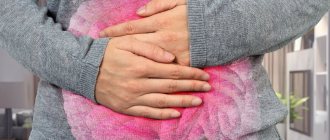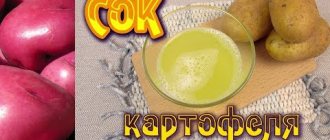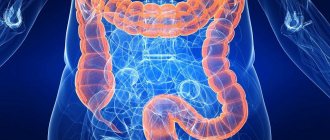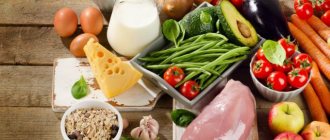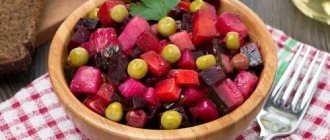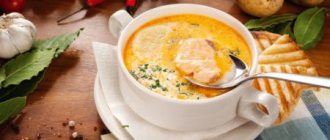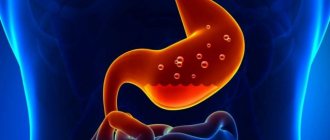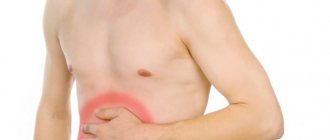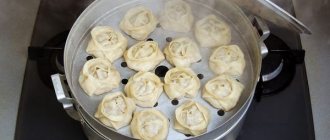General rules
The causes of dysfunction of the digestive organs are: poor nutrition, imbalances in the diet (its imbalance), lack of a meal plan.
All diseases of the gastrointestinal tract have a chronic course, and this forces the patient to give up their usual diet for a long time, and sometimes for life. Diet therapy is an important treatment method, since proper nutrition can improve the patient’s quality of life and reduce the risk of exacerbation. There are many diseases of the digestive system, which occur in acute and chronic forms and are manifested by various symptoms. Pain in the left hypochondrium does not always indicate a disease of the pancreas. Only through examination can a correct diagnosis be established, possible concomitant pathologies identified and adequate treatment carried out. Accordingly, therapeutic nutrition will be somewhat different.
The following dietary tables are used in gastroenterology:
- No. 1 - indicated for diseases of the stomach and duodenum;
- No. 2 - prescribed for acute gastritis , chronic gastritis with secretory insufficiency, colitis and enteritis during the recovery period;
- No. 3 - recommended for intestinal diseases (colitis) accompanied by constipation ;
- No. 4 - for colitis occurring with diarrhea ;
- No. 5 - indicated for hepatitis , pancreatitis , conditions after gastrectomy and liver surgery, cholecystitis and after surgical removal of the gallbladder, with stagnation of bile.
These are the main tables, but there are also varieties that are prescribed differentially depending on the stage of the disease and the severity of functional disorders of a particular organ.
For example, Table No. 4 has four varieties, taking into account the presence of fermentation processes in the intestines, concomitant pathology of the pancreas, gluten intolerance in patients and the acute process of the disease. Dietary Table No. 5 is distinguished by the presence of five varieties. During the period of exacerbation, options with the greatest mechanical and chemical sparing are recommended, and subsequently the patient is transferred to the main table.
This approach allows you to individualize nutrition and adjust it by the type of culinary processing and the consistency of the dishes. Despite the variety of dietary tables and some differences in the range of products, they adhere to the most important and important principle of nutrition for diseases of the digestive system - sparing.
A gentle diet for gastrointestinal diseases implies:
- Elimination of the negative effects of food - mechanical, physical and chemical.
- Compliance with the regime and the principle of fractional nutrition, since large volumes of food have a negative effect on the functions of the stomach (secretory and motor).
- Eating food at the optimal temperature is 400 s.
- Chew thoroughly. This helps to prepare food well: chop it and moisten it with saliva, which is also involved in the digestion process. With leisurely and good chewing of food, digestion and assimilation of its components occur more fully.
Mechanical sparing is achieved by excluding products that contain a lot of fiber, coarse fibers and connective tissue (this applies to rough meat, poultry skin and fish). This also includes culinary processing of foodstuffs—cooking, short-term baking, and mashing of foodstuffs. Among gastroenterological diets, the main part includes pureed dishes.
Unfavorable mechanical effects are caused by:
- Fruits with peel and berries (gooseberries, currants, grapes).
- Cabbage, legumes, mushrooms, bran bread, whole grain cereals, nuts.
- Solid foods, tough meats, large pieces of food, cartilage and tendons.
- Any fried or baked food with a distinct crust.
In this regard, the most suitable cooking methods for patients with gastroenterological diseases are boiling, steaming, stewing or short-term baking. In addition, food that is quickly digested and leaves the stomach will also have minimal mechanical impact. Patients are recommended to eat liquid, mushy, mashed and pureed foods. The degree of mechanical sparing depends on the form of the disease - exacerbation, unstable remission or remission.
Food with a temperature of 37-400 °C has the least impact on the mucous membrane. Hot dishes with a temperature of 60 °C or more irritate the mucous membrane and delay the evacuation of food.
Chemical sparing is achieved by including products that minimally stimulate gastric secretion. The diet for the gastrointestinal tract (GIT) should contain soups (low-fat and not fried), liquid porridges with water or milk, boiled meat and fish, eggs (in the form of an omelet), milk and non-acidic dairy products, weak tea, stale white bread , alkaline still waters.
At any stage of the disease, strong pathogens of secretion are excluded, which include:
- spices (all types of peppers, ginger, mustard, spicy vegetables, seasonings, horseradish);
- smoked and spicy prepared gastronomic products, snack foods, canned meat and fish, dishes with tomato sauce, meat sauces and strong broths;
- meat and fish broths rich in extractive substances, mushroom decoctions;
- vegetables rich in essential oils (garlic, onion);
- all fried foods;
- stewed meat and fish;
- rye bread, butter pastries;
- black coffee;
- pickled and pickled vegetables, sour fruits;
- hard boiled eggs;
- overheated edible fats;
- high acidity fermented milk products, whey;
- carbonated drinks and kvass;
- alcohol.
If diseases of the stomach and duodenum are accompanied by constipation , adjustments are made to the basic diet for this disease - the amount of boiled vegetables prepared in the form of puree (most often zucchini, pumpkin, carrots, beets), well-boiled and mashed dried fruits, infusion from dried fruits and vegetable oil.
For liver diseases, dietary Table No. 5 , and the presence of constipation requires an increase in dietary fiber and magnesium in the diet - salads from boiled carrots and beets, puree from plums, apricots and peaches, vegetable/fruit juices, vegetables and fruits in any form, grain bread , cereals - buckwheat, oatmeal, pearl barley.
They often resort to treatment with folk remedies. Indeed, herbal medicine is one of the auxiliary methods of treating diseases of the gastrointestinal tract. It is effective in seasonal prevention of relapses or at the first signs of exacerbation. At home, to relieve pain, you can use decoctions of marshmallow, anise, chamomile, centaury, mint, fireweed, and coriander. Decoctions of calamus, elecampane, marshmallow, licorice, burdock, flax seed, alder and sage have an enveloping and mucus-forming effect. Potato juice has the same effect. In this case, it is necessary to take into account the effects of herbs on the secretory function of the stomach.
What should the diet be like?
It should be noted right away that the diet for bedridden patients must comply with the basic principles of proper nutrition, which apply to any person. These include:
- Adequacy. The diet must correspond to the body's energy expenditure.
- Balance. Nutrition should be balanced in essential nutrients.
- Regularity. A certain number of meals per day should be provided.
- Safety. You need to maintain hygiene and be able to distinguish between stale and fresh foods.
In this case, it is necessary to take into account the characteristics of the patient’s body indicated above. Let's look at the basic principles of nutrition for bedridden patients.
Authorized Products
The diet of patients should consist of:
- Soups prepared in recycled meat/fish broth with the addition of well-cooked and mashed cereals and vegetables (potatoes, zucchini, carrots, cauliflower, young fresh peas, pumpkin, beets). Soups can be seasoned with dried flour (not fried), a small amount of cream or milk, an egg-milk mixture or butter at 100-110°C (without changing color). Fat sautéing of vegetables is avoided. Puree soups (puree and creamy) are less irritating to the gastrointestinal tract, so they are recommended for exacerbation of diseases.
- Veal, lean beef, lean pork (occasionally), chicken, turkey, boiled or steamed rabbit. Dishes made from pureed and chopped minced meat (cutlets, dumplings, purees, pate, soufflé, casseroles, puddings) are well tolerated by patients. To reduce the stimulating effect of extractive substances, it is recommended to first boil all meat products and then stew or bake.
- Low-fat fish (pike perch, carp, hake, pollock, cod, sea fish fillet), boiled or steamed. Fish can be consumed in pieces and in the form of minced meat products.
- Fresh butter and vegetable oil. Milk and sour cream sauces with the addition of a small amount of flour and fresh eggs.
- Boiled, stewed, pureed or chopped vegetables. Vegetables used include beets, pumpkin, kohlrabi, cauliflower inflorescences, potatoes, green peas (young), parsley and dill. Skinless tomatoes unless they cause heartburn. Vegetables are stewed in a small amount of water, and butter is added before serving. A double boiler is suitable for cooking meat, fish or vegetables. Avoid eating fried potatoes.
- Cereal dishes. In case of exacerbation and the presence of diarrhea, only decoctions of rice and oatmeal without milk and fat are recommended, then the same porridges are allowed, but pureed and in liquid form. During the period of remission, you can eat not pureed, but well-cooked porridges, casseroles, cereals, charlottes, and puddings. During the period of remission, you can prepare pilaf with dried fruits, pumpkin and carrots, boiled thin noodles and vermicelli. Ready-made dishes are seasoned with butter or any vegetable oil. It is enough to add 5 g of butter or a teaspoon of vegetable oil to the dish.
- Low-fat milk and dairy products, low-fat cottage cheese in its natural form and various dishes made from it (casseroles, cereals, puddings, baked cheesecakes). Milk is added to cereals, puddings or tea. For peptic ulcers and high acidity, milk is the main product. Some patients tolerate fermented milk products better.
- Non-acidic fruits and berries, from which compotes, jelly, jellies, and mousses are prepared. You can eat baked apples and small quantities of chopped, peeled and fresh ones.
- Bread and baked goods (biscuit, biscuits). We recommend white and gray bread, freshly baked yesterday.
- Desserts - semolina pudding with apples, cottage cheese casserole with prunes, carrots or pumpkin, apricot jelly and puree, fruit jelly and creams. You can drink rosehip infusion and vegetable juices as drinks.
- Spices that do not irritate the mucous membranes: parsley, dill, bay leaf, cumin. It is good to add cumin grains to meat, soups, and stewed vegetables, and in case of exacerbation, only its decoction. When adding it to prepared dishes, it is better to pour boiling water over it to soften it.
Table of permitted products
| Proteins, g | Fats, g | Carbohydrates, g | Calories, kcal | |
Vegetables and greens | ||||
| zucchini | 0,6 | 0,3 | 4,6 | 24 |
| cauliflower | 2,5 | 0,3 | 5,4 | 30 |
| potato | 2,0 | 0,4 | 18,1 | 80 |
| carrot | 1,3 | 0,1 | 6,9 | 32 |
| parsley | 3,7 | 0,4 | 7,6 | 47 |
| beet | 1,5 | 0,1 | 8,8 | 40 |
| dill | 2,5 | 0,5 | 6,3 | 38 |
Fruits | ||||
| quince | 0,6 | 0,5 | 9,8 | 40 |
| pomegranate | 0,9 | 0,0 | 13,9 | 52 |
| pears | 0,4 | 0,3 | 10,9 | 42 |
| dogwood | 1,0 | 0,0 | 10,5 | 44 |
| apples | 0,4 | 0,4 | 9,8 | 47 |
Berries | ||||
| blueberry | 1,1 | 0,4 | 7,6 | 44 |
Nuts and dried fruits | ||||
| dried pears | 2,3 | 0,6 | 62,6 | 249 |
Cereals and porridges | ||||
| buckwheat (kernel) | 12,6 | 3,3 | 62,1 | 313 |
| semolina | 10,3 | 1,0 | 73,3 | 328 |
| oat groats | 12,3 | 6,1 | 59,5 | 342 |
| cereals | 11,9 | 7,2 | 69,3 | 366 |
| white rice | 6,7 | 0,7 | 78,9 | 344 |
Flour and pasta | ||||
| pasta | 10,4 | 1,1 | 69,7 | 337 |
| milk pasta | 11,5 | 2,9 | 67,1 | 345 |
| noodles | 12,0 | 3,7 | 60,1 | 322 |
Bakery products | ||||
| white bread crackers | 11,2 | 1,4 | 72,2 | 331 |
Confectionery | ||||
| jam | 0,3 | 0,2 | 63,0 | 263 |
| jam | 0,3 | 0,1 | 56,0 | 238 |
| marshmallows | 0,8 | 0,0 | 78,5 | 304 |
| fruit and berry marmalade | 0,4 | 0,0 | 76,6 | 293 |
| meringues | 2,6 | 20,8 | 60,5 | 440 |
| paste | 0,5 | 0,0 | 80,8 | 310 |
Raw materials and seasonings | ||||
| dried bird cherry | 8,4 | 0,0 | 16,8 | 101 |
Dairy | ||||
| skim milk | 2,0 | 0,1 | 4,8 | 31 |
| sour cream | 2,8 | 20,0 | 3,2 | 206 |
| acidophilus | 2,8 | 3,2 | 3,8 | 57 |
Cheeses and cottage cheese | ||||
| cheese | 24,1 | 29,5 | 0,3 | 363 |
| cottage cheese 0.6% (low fat) | 18,0 | 0,6 | 1,8 | 88 |
Meat products | ||||
| boiled beef | 25,8 | 16,8 | 0,0 | 254 |
| boiled veal | 30,7 | 0,9 | 0,0 | 131 |
| rabbit | 21,0 | 8,0 | 0,0 | 156 |
Bird | ||||
| boiled chicken | 25,2 | 7,4 | 0,0 | 170 |
| turkey | 19,2 | 0,7 | 0,0 | 84 |
Fish and seafood | ||||
| Red caviar | 32,0 | 15,0 | 0,0 | 263 |
| black caviar | 28,0 | 9,7 | 0,0 | 203 |
Oils and fats | ||||
| butter | 0,5 | 82,5 | 0,8 | 748 |
Non-alcoholic drinks | ||||
| mineral water | 0,0 | 0,0 | 0,0 | — |
| green tea | 0,0 | 0,0 | 0,0 | — |
| black tea | 20,0 | 5,1 | 6,9 | 152 |
Juices and compotes | ||||
| carrot juice | 1,1 | 0,1 | 6,4 | 28 |
| pumpkin juice | 0,0 | 0,0 | 9,0 | 38 |
| Apple juice | 0,4 | 0,4 | 9,8 | 42 |
| * data is per 100 g of product | ||||
Eating protein foods
Getting the right amount of protein plays an important role in diets for bedridden people. Proteins “repair” and build body tissue, including muscle tissue. Protein contains basic building blocks known as amino acids. Our body synthesizes all but nine amino acids, which is why they are called essential. The main sources of protein are:
- fish;
- turkey;
- chicken;
- red meat;
- legumes;
- dairy products (milk, yogurt, kefir, cottage cheese);
- eggs.
Daily intake depends primarily on weight, as well as age and the number of calories burned. Typically, the norm for bedridden patients is 1 g per kilogram of body weight. It may be higher (for example, when bedsores form), but you should not eat too much protein, especially if the patient suffers from kidney diseases. Food for bedridden patients should be balanced in proteins, fats and carbohydrates.
Important: if a patient develops bedsores, his body’s need for nutrients becomes even higher. Thus, protein deficiency negatively affects healing. Every day, a wound can lose more than 50 g of protein with exudate. As a result, patients’ need for this substance increases by one and a half to two times.
Fully or partially limited products
All dietary tables exclude:
- Stringy and fatty meat (only lean and rare pork is allowed), fried meat and fish, fried potatoes, pancakes, pancakes, fried donuts, smoked meats, lard, goose, duck and lamb, smoked meats.
- Salted, fried, smoked fish, canned fish.
- Fast food and semi-finished products.
- Soups with fried dressing, onion soup, bean, pea, first courses with the addition of kidneys, millet and cabbage (this also applies to Savoy cabbage), cabbage soup, okroshka, solyanka, rassolnik, any soups with meat/fish/mushroom broths.
- Onion, meat, mushroom, fish, garlic, any mayonnaise-based sauces.
- Vegetables with coarse fiber (radish, radish), difficult to digest (mushrooms), irritating the mucous membrane (garlic, green onions, ginger, pickled vegetables), spinach and sorrel.
- Wheat, pearl barley, barley, millet and corn porridge, legume dishes.
- Ice cream, full-fat puddings, nut and raisin casseroles, nut muffins, chocolate.
- Fatty and sour cottage cheese, fatty fermented milk drinks, fatty cheese.
- Strong coffee and cocoa, fruit sparkling waters, alcoholic drinks.
- Black and other types of pepper, mustard, vinegar, horseradish.
- Pears, lingonberries, raspberries, blueberries, grapes, figs, nuts, currant compotes.
Table of prohibited products
| Proteins, g | Fats, g | Carbohydrates, g | Calories, kcal | |
Vegetables and greens | ||||
| vegetables legumes | 9,1 | 1,6 | 27,0 | 168 |
| swede | 1,2 | 0,1 | 7,7 | 37 |
| cabbage | 1,8 | 0,1 | 4,7 | 27 |
| cucumbers | 0,8 | 0,1 | 2,8 | 15 |
| parsnip | 1,4 | 0,5 | 9,2 | 47 |
| parsley (root) | 1,5 | 0,6 | 10,1 | 49 |
| white radish | 1,4 | 0,0 | 4,1 | 21 |
| turnip | 1,5 | 0,1 | 6,2 | 30 |
| celery | 0,9 | 0,1 | 2,1 | 12 |
| green beans | 2,8 | 0,4 | 8,4 | 47 |
| horseradish | 3,2 | 0,4 | 10,5 | 56 |
| garlic | 6,5 | 0,5 | 29,9 | 143 |
| spinach | 2,9 | 0,3 | 2,0 | 22 |
| sorrel | 1,5 | 0,3 | 2,9 | 19 |
Fruits | ||||
| bananas | 1,5 | 0,2 | 21,8 | 95 |
| melon | 0,6 | 0,3 | 7,4 | 33 |
Berries | ||||
| grape | 0,6 | 0,2 | 16,8 | 65 |
Cereals and porridges | ||||
| corn grits | 8,3 | 1,2 | 75,0 | 337 |
| pearl barley | 9,3 | 1,1 | 73,7 | 320 |
| Wheat groats | 11,5 | 1,3 | 62,0 | 316 |
| millet cereal | 11,5 | 3,3 | 69,3 | 348 |
| barley grits | 10,4 | 1,3 | 66,3 | 324 |
Bakery products | ||||
| vysivkovy bread | 9,0 | 2,2 | 36,0 | 217 |
| Old Russian grain bread | 9,6 | 2,7 | 47,1 | 252 |
| Rye bread | 6,6 | 1,2 | 34,2 | 165 |
Confectionery | ||||
| candies | 4,3 | 19,8 | 67,5 | 453 |
| cookie | 7,5 | 11,8 | 74,9 | 417 |
| butter cookies | 10,4 | 5,2 | 76,8 | 458 |
Ice cream | ||||
| ice cream | 3,7 | 6,9 | 22,1 | 189 |
Cakes | ||||
| cake | 4,4 | 23,4 | 45,2 | 407 |
Raw materials and seasonings | ||||
| seasonings | 7,0 | 1,9 | 26,0 | 149 |
| mustard | 5,7 | 6,4 | 22,0 | 162 |
Meat products | ||||
| pork | 16,0 | 21,6 | 0,0 | 259 |
Sausages | ||||
| dry-cured sausage | 24,1 | 38,3 | 1,0 | 455 |
Bird | ||||
| duck | 16,5 | 61,2 | 0,0 | 346 |
| goose | 16,1 | 33,3 | 0,0 | 364 |
Fish and seafood | ||||
| dried fish | 17,5 | 4,6 | 0,0 | 139 |
| smoked fish | 26,8 | 9,9 | 0,0 | 196 |
| canned fish | 17,5 | 2,0 | 0,0 | 88 |
Oils and fats | ||||
| animal fat | 0,0 | 99,7 | 0,0 | 897 |
| cooking fat | 0,0 | 99,7 | 0,0 | 897 |
Non-alcoholic drinks | ||||
| bread kvass | 0,2 | 0,0 | 5,2 | 27 |
Juices and compotes | ||||
| Orange juice | 0,9 | 0,2 | 8,1 | 36 |
| grape juice | 0,3 | 0,0 | 14,0 | 54 |
| Cherry juice | 0,7 | 0,0 | 10,2 | 47 |
| Strawberry juice | 0,6 | 0,4 | 7,0 | 31 |
| tangerine juice | 0,8 | 0,3 | 8,1 | 36 |
| tomato juice | 1,1 | 0,2 | 3,8 | 21 |
| * data is per 100 g of product | ||||
Sample menu for the day
For an approximate daily menu for bedridden patients, see the table below.
| Eating | Main course | Dessert | Drink |
| Breakfast | Liquid porridge (oatmeal, buckwheat, millet) with nuts and berries | Mashed banana | Compote |
| Lunch | Mashed low-fat cottage cheese with dried fruits | Freshly squeezed carrot juice | |
| Dinner | Vegetarian soup, cabbage rolls or steamed cutlets | Fruit or milk jelly | |
| Afternoon snack | Vegetable salad with olive/linseed oil | ||
| Dinner | Mashed or boiled porridge with butter | Casserole (can be cooked in the oven or steamed), baked apple | |
| Two hours before bedtime | Low-fat kefir |
Menu (power mode)
It is quite difficult to create a universal menu for all gastrointestinal diseases. Therefore, below is an approximate version of the diet.
| Breakfast |
|
| Lunch |
|
| Dinner |
|
| Afternoon snack |
|
| Dinner |
|
| For the night |
|
| Breakfast |
|
| Lunch |
|
| Dinner |
|
| Afternoon snack |
|
| Dinner |
|
| For the night |
|
- 1st breakfast: soft-boiled egg, stale bun.
- 2nd breakfast: carrot-apple soufflé.
- Lunch: milk soup with pureed rice, chicken zrazy with omelette, fruit jelly.
- Dinner: mashed meat and potatoes, spinach.
- Before bed: curd cream.
| Breakfast |
|
| Lunch |
|
| Dinner |
|
| Afternoon snack |
|
| Dinner |
|
| For the night |
|
Dietary recipes for gastrointestinal diseases
Dietary nutrition for gastrointestinal diseases will differ only in the degree of mechanical processing of products. If during the period of exacerbation the patient is shown mucous cereal decoctions and tender meat or fish soufflé (during preparation, the products are passed through a meat grinder several times or beaten), then during the recovery period pureed soups and cereals, vegetable purees and minced meat products are introduced.
During the period of remission, you can eat chunky lean chicken, fish and beef, cut into small pieces. Below are dietary dishes for gastrointestinal diseases at different stages of the disease.
First meal
Slimy rice soup
The cereal is well boiled and filtered, discarding the cereal to the side. The broth is brought to a boil and added a little salt. With the doctor's permission, add 0.5 teaspoon of butter. The finished dish should have the consistency of cream.
Zucchini and carrot soup
Zucchini, potatoes, oatmeal, butter.
Boil potatoes, carrots and zucchini, wipe them, dilute with vegetable broth to the desired consistency. Add oatmeal to the boiling soup, which will thicken it a little. Add butter before serving.
Vermicelli soup with vegetable broth
Prepare a vegetable broth from carrots, potatoes, zucchini and pumpkin. Drain the vegetables in a colander. Boil thin vermicelli in a vegetable broth; you can add finely chopped vegetables. Add salt and add oil if desired.
Second courses
Chicken soufflé
Beat the boiled chicken meat well in a blender, adding a few tablespoons of bechamel sauce, butter and egg yolk. The whipped whites are carefully folded into the well-beaten mass and salted. The resulting mass is placed in suitable molds and steamed.
Baked omelette
Eggs, milk and sour cream 1 dessert spoon each, salt.
A well-beaten mixture of eggs with sour cream and milk is added with salt and poured into a mold, which must first be greased with butter. It is better to choose a small form - the smaller it is, the higher and more magnificent the finished omelette will be. Bake in a steam oven. To do this, place the mold with the egg-milk mixture in a container with hot water. The water should reach the middle of the main shape.
Reviews and results
Nutrition for diseases of the gastrointestinal tract during periods of mild exacerbation or in remission is quite varied. Most diets for gastroenterological patients contain the physiological norm of all substances, and are therefore suitable for constant use.
Physiologically inferior diets are used for a short period of time and only in case of a sharp exacerbation. Proper nutrition, according to patients, is an important component of treatment and quickly brings relief. If you adhere to it constantly, even not very strictly, then exacerbations can be avoided.
- “... I was told that if you burp rotten eggs, you need to check your stomach, although there were no other complaints. Gastroscopy revealed inflammation in the outlet section of the stomach. I checked the acidity - it turned out to be slightly low. After the prescribed treatment and diet, everything returned to normal within a month. I mastered all the dietary dishes and came to the conclusion that it is convenient to cook everything in a slow cooker. Now I understand that I ate incorrectly: I ate a lot of fried, spicy, smoked, and often only sandwiches. Now I’m trying to restore my stomach with proper and regular nutrition. I take porridge, boiled chicken or cottage cheese to work”;
- “... I have been suffering from gastritis for many years, and in recent years I have developed pain in the intestines and bloating. Outside of an exacerbation, I do not adhere to a diet and only during an exacerbation do I switch to preparing light soups, steamed cutlets, and casseroles with cottage cheese. I cook many dishes in a double boiler, but I think I need to buy a multicooker, since you can cook many more dishes in it. I can eat this way for about a month, and then I switch to general nutrition. I must say that after a week of proper nutrition, improvements come.”
